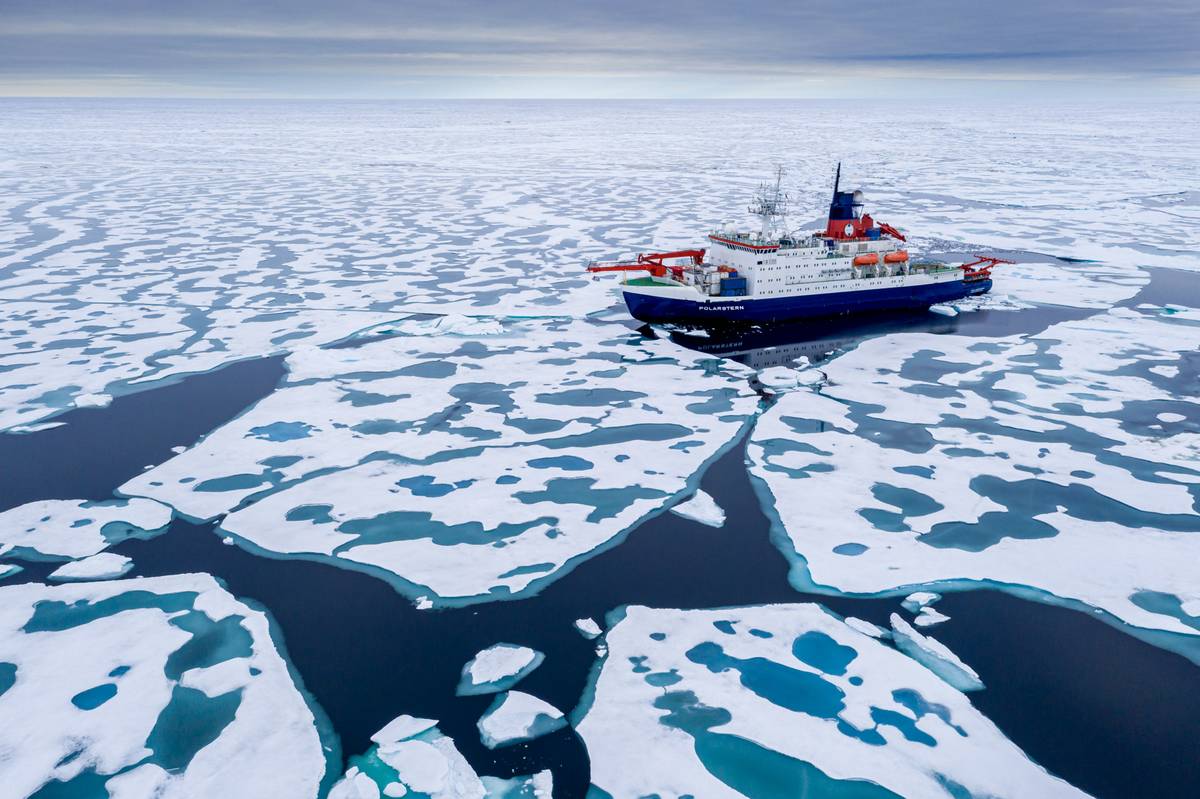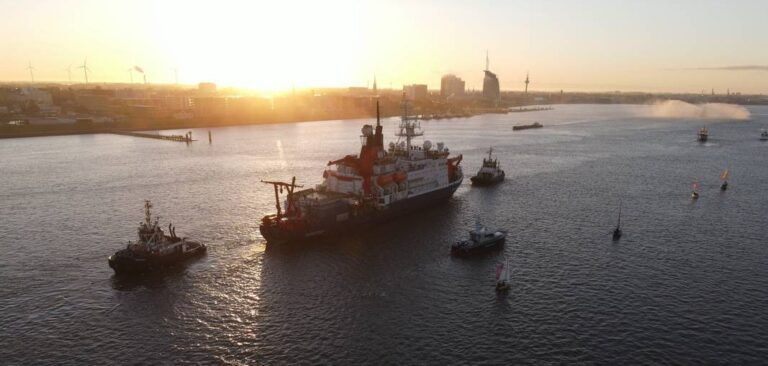After more than a year in the Central Arctic, the research icebreaker Polarstern has returned to her home port in Bremerhaven, Germany. The ship’s return marked the end of a record-breaking expedition; never before had an icebreaker been near the North Pole in winter, and never before could international researchers comprehensively gather climate data in the region of the world hardest hit by climate change.
On September 20, 2019, Polarstern departed from the Norwegian port of Tromsø, bound for the Central Arctic. Once there, the ship was allowed to become trapped in the ice, and began a one-year-long drift across the North Pole – the route and speed were solely determined by the ice drift, powered by wind and currents.
Over the five legs of the expedition, a total of 442 researchers, Polarstern crew members, young investigators, teachers and members of the press took part, hailing from 37 countries. Seven ships, several aircraft and more than 80 institutions from 20 countries were involved.
The researchers had a common goal to investigate complex interactions in the climate system between the atmosphere, ice and ocean, as well as life in the Central Arctic, so as to better represent them in climate models.
In the early summer, the ship had to briefly leave her floe for a personnel transfer. Four weeks later, a new team commenced fieldwork on the ice, continuing their efforts right up to the last day, when the floe (as predicted) reached the ice edge to the east of Greenland, began breaking up under the influence of the waves, and completed its typical lifecycle. To explore the last piece of the puzzle in the sea ice’s annual cycle – the formation of new ice at summer’s end – the expedition then headed farther north, crossed the North Pole, and moored to a second floe in its vicinity.
Prof. Antje Boetius, director of the Alfred Wegener Institute, Helmholtz Centre for Polar and Marine Research (AWI), commented, “With the MOSAiC expedition, we have followed in the footsteps of the Norwegian polar researcher Fridtjof Nansen, who ventured the first ice drift through the Arctic Ocean more than 125 years ago. Could he have ever imagined how different the Arctic is today?
“And even with the possibilities of modern polar research, the expedition was no less exciting, taking us far beyond the limits of our previous understanding, and demanding a great deal from the participants, especially due to the pandemic. Today the expedition comes to a successful end, and we have a much clearer grasp of the interplay between the ice, ocean and atmosphere than ever before.”
Prof. Markus Rex, expedition leader and head of the MOSAiC project, Alfred Wegener Institute, Helmholtz Centre for Polar and Marine Research (AWI), added, “Through the expedition, we can provide the climate data and observations that humanity so urgently needs in order to make fundamental and pressing political decisions on climate protection.
“Arctic sea ice is not only an important part of the global climate system; it is also a unique ecosystem and the basis of life for many indigenous societies. And it is a realm of fascinating and unmatched beauty. We should do everything within our power to preserve it for future generations.”




